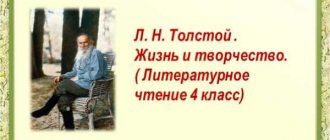Traditions of welcoming winter
Vetrnetr holiday is very ancient, it is a legacy of the times when the Scandinavian way of life was still in many ways close to the primitive. At this time, the transition to a period began when one should not expect help from nature, but one must rely only on oneself, on one’s family and on one’s clan. It was in winter that the redistribution of power began in ancient northern communities, usually cruel and bloody: during the inevitable massacre, the weak died, and the stronger and more ambitious made their way to the top.
The symbol of these changes is fire, which allows you to survive in the harsh winter. Fire is the main attribute of this ancient holiday. The trial by fire was used during the initiation rites, when young men and even boys were initiated into hunters and warriors. According to tradition, on the first winter nights people burned ritual bonfires, held Viking competitions, held initiation rites for young warriors and wild feasts where alcohol flowed like a river. Feasts and ritual lists often ended in bloody showdowns.
Today Winter Day is an exclusively folklore holiday. The beginning of winter in Scandinavia is traditionally celebrated with reenactments of Viking battles and historical festivals. Scandinavian culture is also very popular in Russia, especially in the North-West, Karelia and, of course, in Vyborg, where various thematic festivals are traditionally held.
Gromnitsa - Slavic holiday of the first meeting of Winter and Spring
Gromnitsa (other names Srecha, Perunje Winter) is a Slavic holiday celebrated on February 2. Gromnitsa is one of the holidays that was celebrated quietly, with family. Only in some regions of Russia do they celebrate the traditions of festive festivities on this day and describe only young people walking down the street with songs, without evening gatherings and festive games.
Slavic Gods and Goddesses, who are honored on Gromnitsa
In Gromnitsa they remember the Slavic Goddesses Lelya-Spring and Morena-Winter, as well as Perun, the God of Thunder, and his wife, Diva Dodola, the Goddess of Heavenly Moisture, who is sometimes called the Goddess of Lightning.
According to Slavic myths, on this day the Goddess of Spring Lelya and her sister the Goddess of Winter Morena meet for the first time. Winter is not over yet, but it is already felt that its end is near. Sometimes they say that on Gromnitsa winter fights with spring: who wins depends on whether summer will come soon and whether it will be warm.
The Gromnitsa holiday is so called because on February 2 you can hear thunder and see lightning for the first time. According to legend, it is Perun, the Thunder God, who sends his lightning to help spring. In other myths, instead of Perun, his wife Diva Dodola, Perunitsa, the Goddess of the Thunderstorm, is mentioned. We believe that on this holiday it is right for men and boys to turn to Perun, women and girls - to Diva Dodola.
Loud Candle
The Gromnitsa holiday is best known for the custom of making and casting thunder candles at this time. A loud candle is made from the best wax, which is left in advance for the holiday. There are different rituals for making a loud candle and ideas about what it should look like.
First rite: a large candle made by the owner of the house. On Gromnitsa Day, such a candle is made by the head of the family. Such a candle must be large, often ten palms high. The man lights this candle at the temple and brings it to his home. If there is no temple, a candle is lit on the home altar in the red corner. the loud candle is not left to burn out: they walk around the house and yard with it, carry the candle around the household, after which the candle is extinguished and stored on the altar, lit on holidays.
Second rite: girl’s loud candle “pigtail”. Women make such candles from thin dipped candles, twisting them together into a braid. In this case, there may be several Gromnitsa candles, but all of them are sure to be charmed on the Gromnitsa holiday.
A loud candle can be made in advance before the holiday. As a rule, it is done on the nearest Saturday before Gromnitsa, and on the day of the holiday itself it is only consecrated.
Rituals of the holiday Gromnitsa
In addition to lighting the loud candle, the following holiday rituals are known:
- First Calls of Spring. On Gromnitsa they call for spring quietly, only girls and children take part in this. So far, the chant songs are sung barely audibly, only in their own yard, when there are no other people nearby.
- The ritual of “selling a child” for his happiness and health. The child's mother calls the healer, who symbolically redeems the child. The baby is handed over to the healer through the window, and then she returns the child with the words “Live for my happiness.” The money received for “selling” the child is spent on buying candles.
Signs for Gromnitsa
- On the Thunderstorm of Drops - believe in early spring, if the blizzard clears up - there will be blizzard weather for a long time, until the end of the month.
- On Gromnitsa, drops mean a harvest for wheat, and if there is a blizzard, then there will be no bread.
- A blizzard on Gromnitsa will scatter the grain (which means it threatens a lean year).
Let's celebrate Gromnitsa according to ancient tradition!
Now you know how to celebrate Gromnitsa according to the Slavic tradition. And, if you need help with this, go to “Northern Fairy Tale”. We have many magical articles about this and other folk holidays, as well as churs of the Native Gods for home temples and thunderous candles, which we will begin sending after February 2






